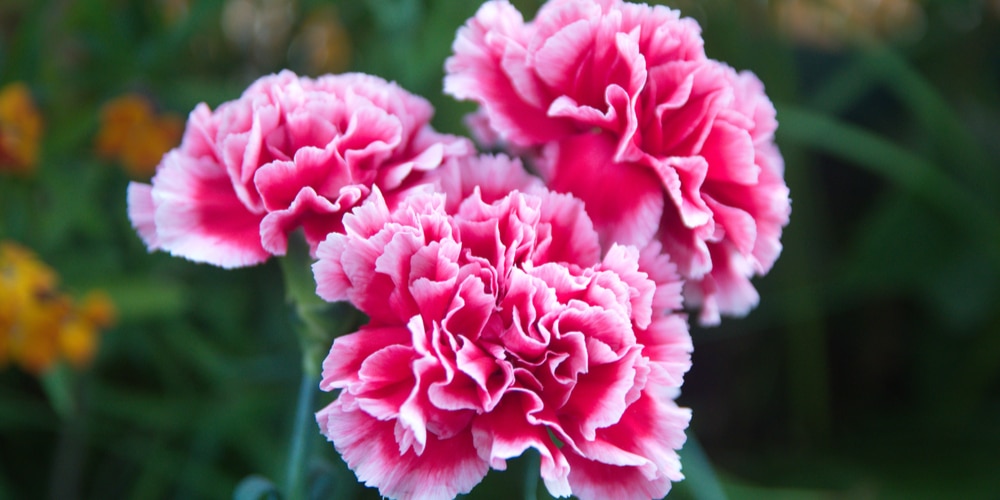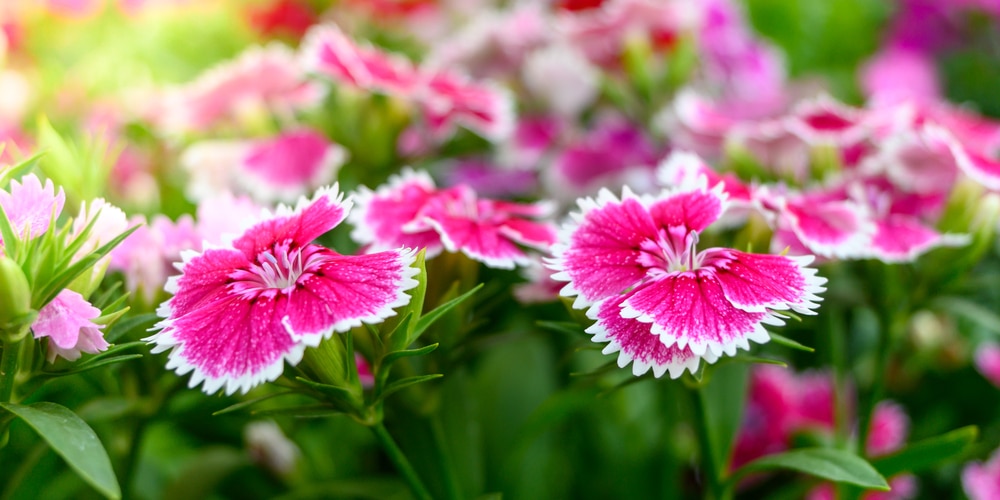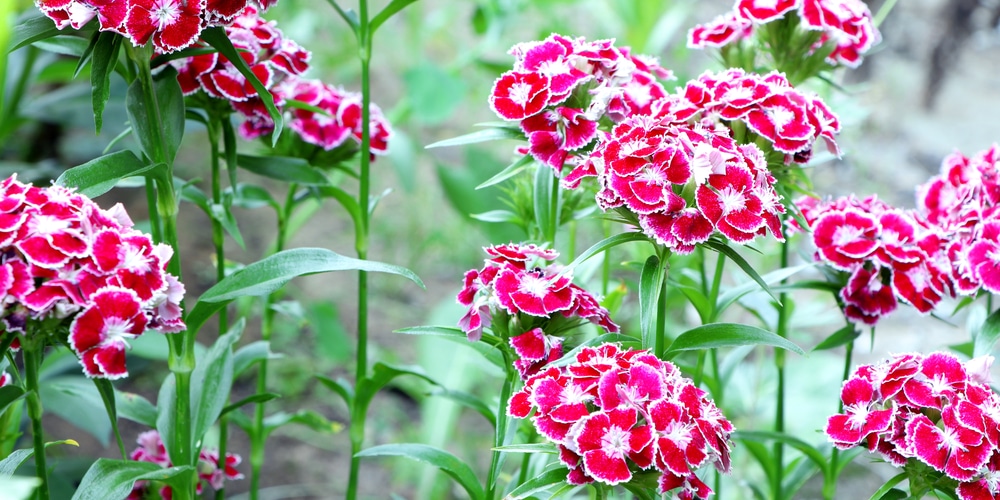Sometimes, it feels like all you need to do to keep flowers blooming is give them a little water and sunshine. But if you want your dianthus plants to thrive, there’s more care involved.
Dianthus are part of the Caryophyllaceae family, including other popular flowers like carnations, pinks, and gypsophila. Their vibrant blossoms from pink, white, red, purple, and yellow make them popular for gardens and bouquets.

Their ability to bloom most of the summer season is another reason to love this plant! However, there comes a time when some gardeners might notice their flowers start to fade. Or, they may have difficulty getting dianthus plants to bloom at all.
If you’re one of those people having trouble with your dianthus, don’t worry! We’ve got some tips to help you get your plants blooming and keep them going all summer long.
Dianthus: Blooming Season
Depending on the species, dianthus will bloom anywhere from late spring to early summer. For example, sweet William (Dianthus barbatus) typically starts blooming in May or June.
Keep in mind that the first year you plant dianthus, they may not bloom until the following year. This is because it takes a full year for the plants to establish themselves before they start flowering.
In general, you can expect dianthus plants to bloom for about six to eight weeks. After that, their blooms will start to fade, and the plant will go into a resting phase. This is normal! However, there are some ways you can help extend the blooming season with a few tricks.
Tips on How You Can Keep Dianthus Blooming Throughout the Summer
Many people often choose dianthus because of its refreshing summer blooms. While it’s true that some cultivars will bloom until the early summer, there are some ways to extend and prolong that blooming period. Here are some secrets:
Choose the Right Variety
This is an unpopular opinion, but not all dianthus have the same blooming period. Some cultivars have a longer blooming season, and this is something you should consider when planting.
Sweet William is one of those varieties that bloom earlier in the season, lasting all throughout summer. Its fragrance is also incredibly strong, making it a great addition to any garden!
Another cultivar that has a long blooming season is the China pink (Dianthus chinensis). Stunning with bi-color blooms, this plant will give your garden a pop of color that lasts all summer.
Water Regularly (But Not Overwater)
Aside from choosing the right cultivar, another secret to extending the blooming season is to water your plants regularly. It’s no secret that these plants love the sunshine,
Dianthus love well-drained soil, so make sure you’re not overwatering them. They also appreciate a good soaking every now and then, so don’t be afraid to give them a deep watering every once in a while.
Consider Your Temperature
Although most dianthus plants have similar growing conditions, their blooming period depends on the outdoor temperature. Some of these plants bloom profusely until fall in cooler climates. They may not survive a frost.
In contrast, some others may only bloom during spring and summer, especially when you’re in hotter regions. With that being said, you’d like to adjust the dianthus variety you’ll get depending on where you live.
Plant in Full Sun
Similar to other flowering plants, they’ll bloom vibrantly and vigorously when placed in an area with full sun. While it may seem like a small thing, this alone can help keep your flowers blooming all throughout summer. Getting the maximum amount of sunlight they need encourages maximum blooming potential.
Pinch Off Dead Blooms
This is no secret – if you want your flowers to keep blooming, you need to pinch off the dead blooms. The dead blooms are considered wasted energy for the plant and will only hinder its growth. Pinching them off allows the plant to focus its energy on new growth, which encourages more blooming.
Additionally, deadheading also prevents the plant from setting seeds. Once the plant sets seed, its blooming season is officially over. This is the first thing that you should avoid if you want your dianthus to keep blooming all summer!
This is one secret that many gardeners often forget. Regularly deadheading your dianthus significantly prolongs and extends its blooming season. Don’t be afraid to snip off those dead blooms. You’re doing your plant a favor by doing so.
Use the Right Fertilizer, and Do So Regularly
Last but not least, fertilizing is also key in keeping your dianthus blooming all summer. Choose a fertilizer with a lower nitrogen ratio. At this point, you’ll want to focus more on phosphorus and potassium, as these two nutrients are key in encouraging blooming.
Fertilizing at the perfect time is also crucial. For best results, apply fertilizer every 4-6 weeks or right before the blooming season. This gives the plant the nutrients it needs to produce vibrant, long-lasting blooms.
How to Keep Dianthus Blooming All Summer: Final Thoughts
For most of us, summer is the time to enjoy our gardens and all the beautiful blooms that come with it. Dianthus is one of those flowers that bloom vibrantly during this season and can keep your garden looking gorgeous all summer long.
There’s no denying that these plants can and will bloom during summer, but if you want to ensure that they bloom profusely and continuously, simply follow the suggestions above, and you’re on your way to a summer full of beautiful blooms!

